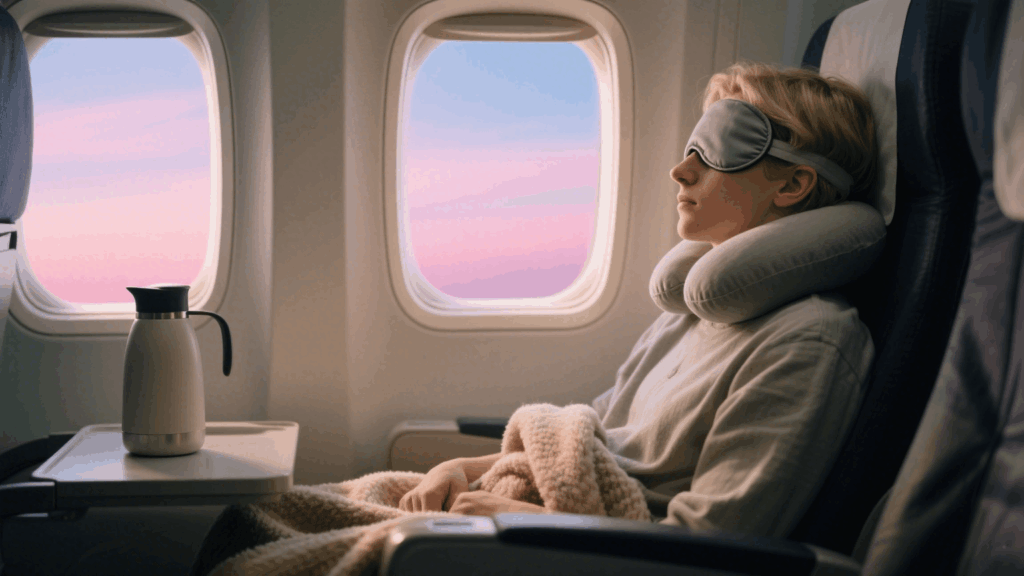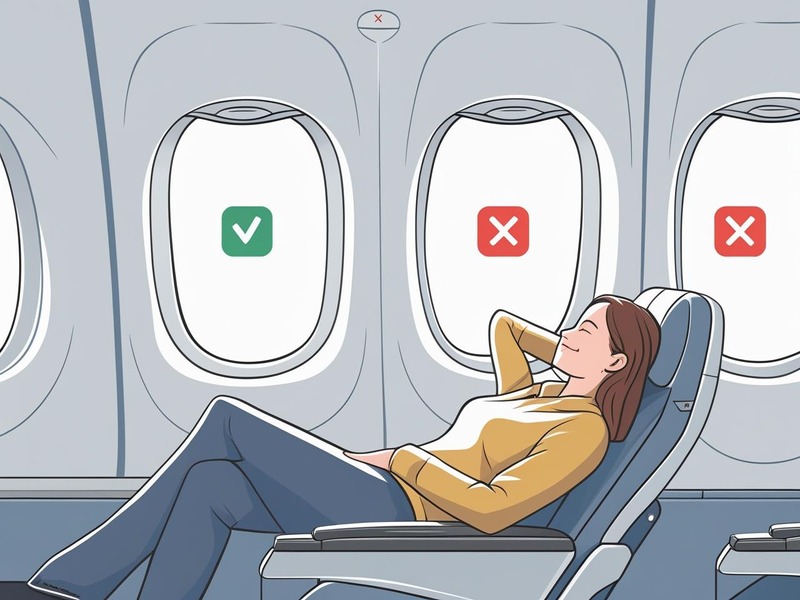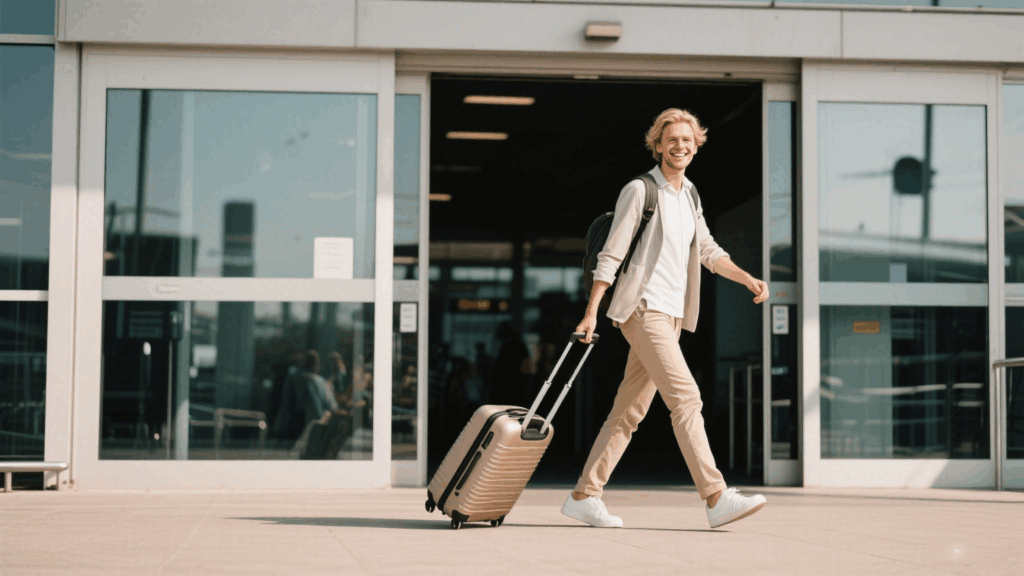The excitement of getting to see new territories is undoubtedly present, but the journey also happens to have dark sides. Staying in the limited cabin space, sleep interruptions, and change of time zones are all parts of the journey that your body and psyche have to endure. Whether you are travelling for a long-awaited vacation or to attend an important international business event, the way you prepare for it will determine the comfort of your trip.
Instead of trying to avoid the flight, consider converting it into a less stressful and even a pleasing part of your journey.

1. Make a Perfect Choice of Your Seat
The rule for long-haul flights is to start from your seat. If you land in the best of all airplane seats, your flight will be half-solved for you. Bear in mind, the comfort of a seat during 8 hours of travel is crucial. An aisle seat may be your top choice for various reasons; it will let you be closer to the toilet and will not restrict your movements. If you are thinking of obtaining a good night’s sleep in the air, the most suitable option is to take a window seat as it will allow you to lean on the wall and thus be comfortable and not disturbed by other passengers.
Comfort can also be found in the front of the plane where you can have wider legroom when you purchase extra legroom or have an upgrade to premium economy. These seats are especially beneficial for tall individuals and those with back issues. On your device, use apps such as SeatGuru to find your airplane’s best seats.

2. Pick Comfort Over a Fashion Parade
It is of paramount importance for one to feel comfy, rather than appearing as if they are going to walk down … runway, in a long-haul flight setting. An excellent example is wearing comfortable, light, elastic clothes, and layering up with others to adapt to the temperature changes in the cabin. You should wear compression stockings to lessen swelling of your legs and feet and to boost blood circulation during the flight.
Get a pair of wear and tear shoes that you can slip off and on quickly when you pass security and while you are seated. To help you stay warm, take along with you a scarf or travel blanket.
3. Stay Hydrated and Snack Smart
Air in the cabin is extremely dry; therefore, drink a sufficient amount of water constantly while flying. Avoid excessive alcohol and caffeine that can lead to loss of fluids in the body and interrupt your sleep. You will be helped by most stewards to fill up your water bottle, no questions so long as you are polite.
Be wise in choosing and consuming food during the flight. Pick the best ones, mainly nuts, fruits, or protein bars, as they are healthy snacks. They are most of the time also the most nutritious and filling options rather than the salty, carbohydrate-rich meals distributed on the plane. And lastly, eating less also lessens the bloating effect, which is very common during flights.

4. Move, Stretch, and Stay Active
After sitting for a long period, the body can effectively begin to show signs such as stiffness, swelling, or even deep-vein thrombosis (DVT). Combat these problems by taking a walk or doing easy exercises every 1-2 hours to keep optimum circulation. Do the exercises that increase the circulation, such as the ankle flex, shoulder roll, and wrist rotation.
Those who fly probably have found out that there are some airlines that show you some in-seat exercises in their in-flight entertainment systems. Standing stretches near the flight attendants’ station or the restroom if it is there, would be a great idea if that was possible for you—just do not interfere with others who are on the move during the flight.
5. Optimize Your Sleep Environment
How to cope with sleeping problems is always a challenge, especially when talking about long haul flights. To create a comfortable and quiet atmosphere, get an eye mask, noise-canceling headphones or earplugs, plus a neck pillow that holds your head. Moreover, if needed, melatonin, as a light sleep aid, can be your last resort. Nonetheless, always meet your doctor prior to taking.
Apply the time zone of your final destination to be the same time zone right when your plane takes off. By adapting your sleeping and eating patterns early, your jet lag will be less severe after you have landed.
6. Entertain Yourself Wisely
While the majority of long-haul flights provide films and series, take also your own content with you. Download your favorite podcasts, audiobooks, or playlists in advance as a contingency plan. Make sure to have your power bank full, take your headphones with you, and maybe a compact travel game or journal to be able to manage free time.
It’s advisable to circulate between watching something on a screen and indulging in low-stimulation activities (such as reading or meditation), because the latter can also help to avoid sensory overload and tiredness.
7. Pack a Personal Comfort Kit
Carry a small pouch that contains a few items that may not occupy much space but still have a major impact: sanitizer, lip balm, face mist, toothbrush and toothpaste, facial wipes, moisturizer, and, if you happen to have the doctor’s prescription, medication. This kit will be of indefinable help for you to be both fresh and active during your flight and the post-flight period as well.
At first sight, travel pillow, foot hammock, or mini massager might be unnecessary, but such objects will totally change your flight experience, especially when the flight is longer than 10 hours.
8. Mentally Prepare and Stay Positive
What you think is important. Knowing that the flight is part of the journey can change your perception positively. You can enjoy the flight to disconnect from your usual schedule, plan your trip, or just relax. In addition to the aforementioned activities, some travelers take it as an opportunity to detoxify their bodies.
k. Moreover, guided meditations or breathing exercises can make you feel calm and keep a difficult moment at bay.
Conclusion: Turn the Change into the Journey
Enduring long-haul flights can be a different experience if everything is managed properly, we have the right equipment and the attitude. It is the period of rest and relaxation away from the two exciting locations.
Don’t forget to position the fact that surviving long-haul flights is more than a match for staying fresh—it’s about heading off with an additional amount of energy.

Are you an occasional traveler or are you on the threshold of your first long-distance flight if so, these tactics will show you how to be comfortable when you start out and how to be confidently air?